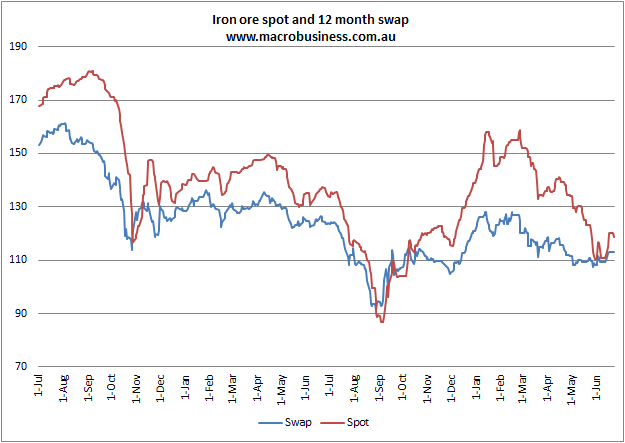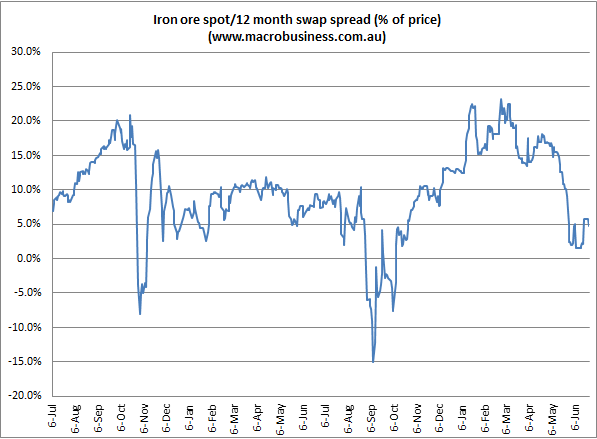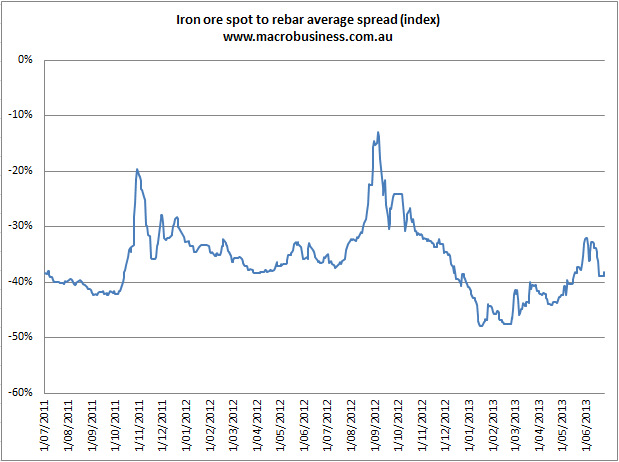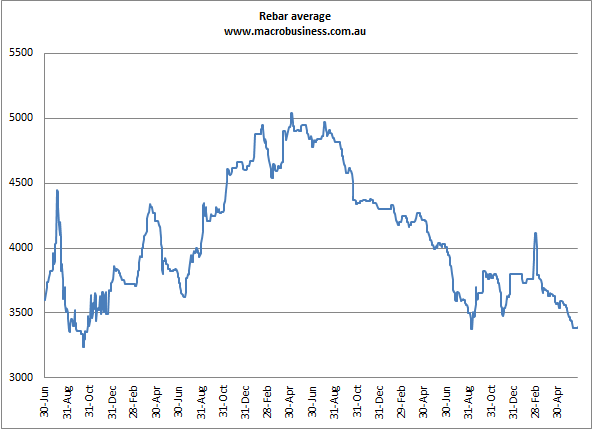Find below the daily iron ore price table for June 21, 2013:

I wouldn’t call and end to the rally yet. And the charts:

Our spreads remain at appropriate levels:


And rebar is still struggling badly:

There was some hope from China with positive rhetoric from Hebei. From the Iron Ore Team:
Iron-ore prices have bottomed and will recover toward the end of this year as Chinese steelmakers increase output, according to Hebei Iron & Steel Co., the country’s largest producer of the metal by volume.
Benchmark China-bound iron ore prices will climb as high as $140 a metric ton in the second half, said Tian Zejun, president of Hebei’sinternational trading unit. Iron ore for delivery in the Chinese port of Tianjin has dropped 24 percent to $120.60 since reaching a 2013 peak in February, data from The Steel Index show.
“By the end of this year iron ore should be quite stabilized,” Tian said in an interview through an interpreter in Vancouver today. “After that, it should move to a higher price because Chinese steel production will continue to expand.”
I totally disagree of course but that’s what make a market! There was also Twiggy’s rumblings over the weekend:
Mr Forrest wrote off some forecasters’ predictions of an iron ore price of $US80 ($86.51) per tonne in the near to mid-future. Goldman Sachs is forecasting an iron ore price of $US80 for 2015 as the market switches into oversupply.
…“I think that’s underestimating the fact there’ll be a supply response at any level like that,” he said. “That’s really thinking the domestic industry in China can keep going at that price and that the very undercapitalised Indian iron ore export industry can survive at that price.”
Mr Forrest declined to name a price he believed the commodity would settle at but said long-term demand from the developing world would keep the industry sustainable.
“The iron ore price may be strong, it may be weak, but generally it’ll work around the current price in the longer term,” he said. “It will settle on a level which allows sufficient investment into the industry to be able to meet the long-term demands of the developing world. I can’t tell you if that’s at $US130 or that’s at $US100. I can say that the long-term future of China is very sound and the long-term economy of Australia and Western Australia is just as sound.
“I think this is purely cyclical and nothing that should concern us– or prevent long-term planning.”
Indian iron ore operates at $50 per tonne more or less. It’ll be fine at $80. Chinese production will get knocked out but only slowly as every province and his dog supports local production in the name of jobs. Meanwhile the price will keep on falling and Twiggy’s FMG will face much more swift and ruthless market pressures. The long term future of China is sound because it’s moving to change its growth model before (hopefully) it has a debt crisis. That means less iron ore is now good for China. Can conflate the two no longer!

